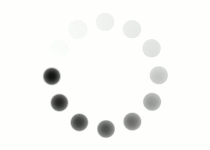We have learned about the materials of visual representation, now we can learn about the tools of visual representation. Which principle of design is an artist using when they create a series of repeating colors within their artwork? How about when they create a strong value difference between the focal point and the rest of the artwork? After answering these questions, click through the flashcards below to review the principles of design.
Balance
Balance refers to the distribution of visual weight in an artwork. It can be symmetrical, asymmetrical, or radial; and it is often used to give an artwork visual stability (symmetrical or radial) or visual tension (asymmetrical).
Unity
Unity is the emphasis of like (similar) things within an artwork. It is typically used to create a sense of calm or stability within an artwork.
Variety
Variety is the emphasis of different things within an artwork. It is typically used to create visual interest and tension within an artwork. Unity and variety and be used in tandem to create balance and contrast within an artwork.
Contrast
Contrast is the use of two very different elements to create a focal point. Most often associated with value (very light and very dark), it can also be used to describe the use of warm and cool colors, thick and thin lines, or geometric and organic shapes.
Rhythm
Rhythm is closely associated with pattern and movement and is the placement or repetition of elements to create a visual tempo or beat. Rhythm is often used to help guide the viewer’s eye through the work or to create a sense of visual unity.
Movement
Movement can be used either to describe actual movement portrayed in the artwork or to describe the way a viewer’s eyes move through an artwork while looking at it. Movement is often accomplished by the use of lines or the repetition of other elements, such as color.
Emphasis
Emphasis is the arrangement of elements to create a focal point. This is often combined with contrast, but the use of leading lines to a focal point is also considered emphasis.
Repetition/Pattern
Repetition, or pattern, is the repetition of elements in an artwork to create movement, rhythm, unity, or visual interest. It is often combined with rhythm, but rhythm does not have to necessarily consist of a repetition of the same element.
Proportion/Scale
Proportion refers to the size of an object in relation to the things immediately around it. Scale often refers to the size of an object or the size of the artwork in relation to the viewer. These principles can be used to create emphasis and contrast (if varied greatly) or unity and harmony (if kept true-to-life).
Harmony
Harmony is the combination of elements and principles that accentuates their similarities. Harmony is created through the use of repetition and unity throughout an artwork.
Cards remaining: 10
Card deck complete!
Let’s look at the same images as we did before when we were identifying elements. Can you identify at least three principles in each artwork?
Artists often dispute the principles of design because several principles can often be lumped together. Consider the principles of rhythm, movement, pattern, and repetition. We have chosen to separate rhythm and movement in this course because they can be accomplished through other means besides repetition. Other principles that are commonly lumped together are contrast and emphasis. These have been separated for this class because contrast can also be used to create balance, pattern, and movement in an artwork.



